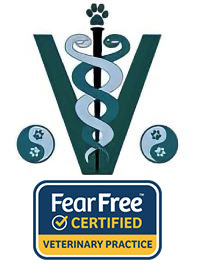Library
-
Pulmonary hypertension means that the peak blood pressure in the arteries of the lungs is much higher than normal. Several abnormalities can lead to high blood pressure in the arteries of the lungs and many of the underlying reasons involve the heart. There are many signs of pulmonary hypertension including exercise intolerance, difficulty breathing with or without exertion/exercise, rapid breathing, coughing, spitting up blood from the lungs, fainting, and more. There are many potential causes of pulmonary hypertension. Several medications are available to treat your dog. It is important to maintain a low-stress environment while any underlying cardiac or respiratory disease is treated and managed. Activity may need to be restricted. It is essential to monitor dogs with pulmonary hypertension for worsening of clinical signs. Periodic physical examinations, blood pressure monitoring, and ultrasound evaluations of the heart will also be important. The long-term prognosis is very guarded for dogs with pulmonary hypertension.
-
Pulmonary thromboembolism describes a condition in which a blood clot lodges in one of the pulmonary arteries, blocking blood flow into the portion of the lung served by that artery. The signs of pulmonary thromboembolism include sudden difficulty breathing, rapid breathing, decreased appetite, fainting, coughing, spitting up blood, weakness, exercise intolerance, and the inability to get comfortable. Sudden death is possible. This article discusses potential causes, treatment, and prognosis.
-
Pulmonary thromboembolism describes a condition in which a blood clot lodges in one of the pulmonary arteries, blocking blood flow into the portion of the lung served by that artery. The signs of pulmonary thromboembolism include sudden difficulty breathing, rapid breathing, decreased appetite, fainting, coughing, spitting up blood, weakness, exercise intolerance, and the inability to get comfortable. Sudden death is possible. This article discusses potential causes, treatment, and prognosis.
-
Pulsed electromagnetic field (PEMF) therapy is the use of a generated electromagnetic field to affect changes in tissues of the body. PEMF is believed to have beneficial pain-relieving and healing effects but definitive clinical evidence or a positive benefit is currently lacking. Potential benefits and contraindications are discussed.
-
A successful life with a family dog starts with great training for your puppy. Planning to set puppies up for success, learning how to use management, positive reinforcement, luring, capturing, and shaping will help owners train their puppies successfully. Positive puppy training and socialization classes are also beneficial for healthy puppies over eight weeks of age.
-
Life with puppies is complicated, and all puppies will sometimes do things their owners find problematic. Using management, planning, supervision, and positive reinforcement for the right behaviors will help puppies succeed, and owners better enjoy their companions.
-
Every puppy will become a dog who needs veterinary care, grooming, and handling. Starting in puppyhood, owners can use positive training techniques to teach their puppies how to accept and enjoy restraint, basic procedures, and home husbandry.
-
Training basic cues such as "sit", "stand", and "lie down" can set the foundation for all future training. These basic skills are useful behaviors that encourage good manners and tolerance of husbandry and veterinary care. Training your dog to understand cues improves communication with your puppy and improves the predictability of all interactions. Training methods based on positive reinforcement include luring, capturing and shaping.
-
Providing puppies with positive socialization experiences may prevent the development of future fears. Puppy socialization must be done gently to avoid accidentally causing fear. Puppies are most primed for socialization before the age of 14 weeks. By taking precautions, some careful socialization can and should be done even before puppies have completed their entire vaccination series.
-
Though every puppy is an individual, large, and giant breed puppies in particular require an individualized approach to nutrition, since they have some different needs compared to small and medium breed dogs. When it comes to puppy food, one size does not necessarily fit all.


